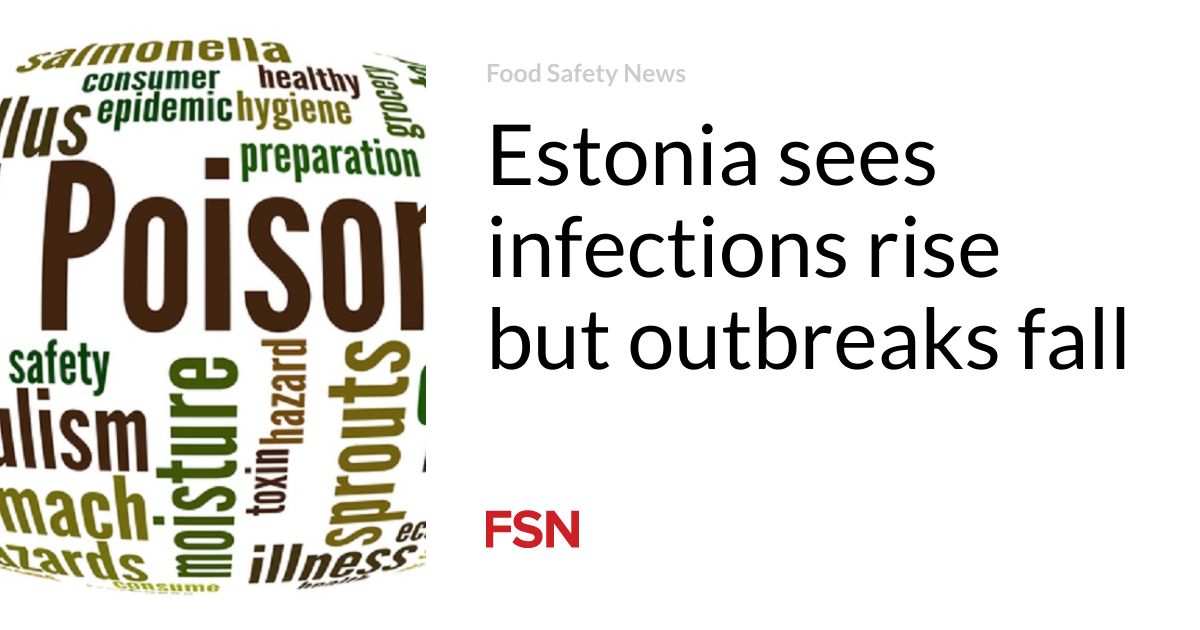Infection
Estonia sees infections rise but outbreaks fall
The number of foodborne infections went up in Estonia in 2022 but outbreaks declined, according to the latest figures.
Results of 2022 zoonosis monitoring revealed that Salmonella was mainly detected in chicken and chicken meat products, said the Agriculture and Food Board in Estonia.
Samples taken from animals, food and feed showed the proportion of non-compliant Salmonella samples from food slightly increased, Campylobacter was detected only twice, and the rate of Listeria monocytogenes positives decreased compared to 2021.
Five outbreaks occurred, down from eight in 2021. In 2022, 18 people fell ill and nine needed hospital treatment. Two incidents had six cases each and were from Salmonella Napoli and Salmonella Enteritidis. Three outbreaks had two cases each and were caused by Salmonella Typhimurium, Salmonella Enteritidis, and Salmonella Minnesota.
Salmonella, Campylobacter and E. coli
A total of 134 cases of salmonellosis were recorded compared to 114 in 2021. More than 40 percent of all patients were children aged less than 1 to 9 years old and 22 percent were people older than 50.
The most common causes were Salmonella Enteritidis, monophasic Salmonella Typhimurium, and Salmonella Napoli. Other serotypes included Agona, Bareilly, Coeln, Derby, Infantis, Kentucky, Mbandaka, Minnesota, Montevideo, Ohio, Stanley, and Thompson.
In 21 cases, infection likely occurred outside Estonia. On 10 occasions, Turkey was mentioned. Most cases were sporadic but 10 percent were part of outbreaks. During surveillance, 6.8 percent of food samples were positive for Salmonella, which is higher than in 2021. Chicken meat and products made up the majority of positives.
For Campylobacter, 211 cases were reported compared to 185 in 2021. Overall, 126 cases were caused by Campylobacter jejuni, eight by Campylobacter coli and no typing was done in 77 cases.
More than 44 percent of patients were children aged 1 to 14. Men were slightly more affected than women. All cases were sporadic and 45 percent were hospitalized. Thirteen infections were acquired abroad from a range of countries including Spain and Greece.
There were 11 E. coli infections in 2022 compared to seven in 2021. Almost two-thirds of patients were children aged less than 1 to 14. More women were ill than men and all cases were sporadic.
Nearly two-thirds of patients were hospitalized and one case was acquired outside Estonia. An increase in infections was noted in summer, with most people falling ill from June to August.
Listeria, Yersinia and Crypto data
Eleven Listeria infections were recorded compared to five in 2021. All sick people were hospitalized and one person died. More than 90 percent of patients were more than 60 years old. More men than women were sick. The majority of patients fell ill between July and November.
In 2022, 727 samples were examined and 23 were positive for Listeria monocytogenes. The proportion of positive samples from meat and meat preparations and fish and fish products was lower than in 2021. No Listeria monocytogenes was isolated from dairy products.
For Yersinia, 53 cases were reported compared to 45 in 2021. In 16 cases it was Yersinia enterocolitica serotype O3.
Almost 60 percent of patients were children aged less than 1 to 14. On two occasions, infection probably took place outside Estonia — in Spain and Turkey. Almost three-quarters of patients were hospitalized. The incidence of illness increased from April to June, when nearly half of the patients fell ill.
One case of Trichinosis was recorded in a man. He was hospitalized. It was the first case in the country since 2015.
A dozen Cryptosporidium infections were noted compared to seven in 2021. A total of 75 percent of patients were children aged less than 1 to 14 years old. More cases were women and there were no outbreaks.
The majority of patients were hospitalized. Four cases were suspected to have occurred abroad in the UK, Spain, and two in Turkey. There was an increase in autumn, with more than half of patients falling ill from August to October.
(To sign up for a free subscription to Food Safety News, click here.)

